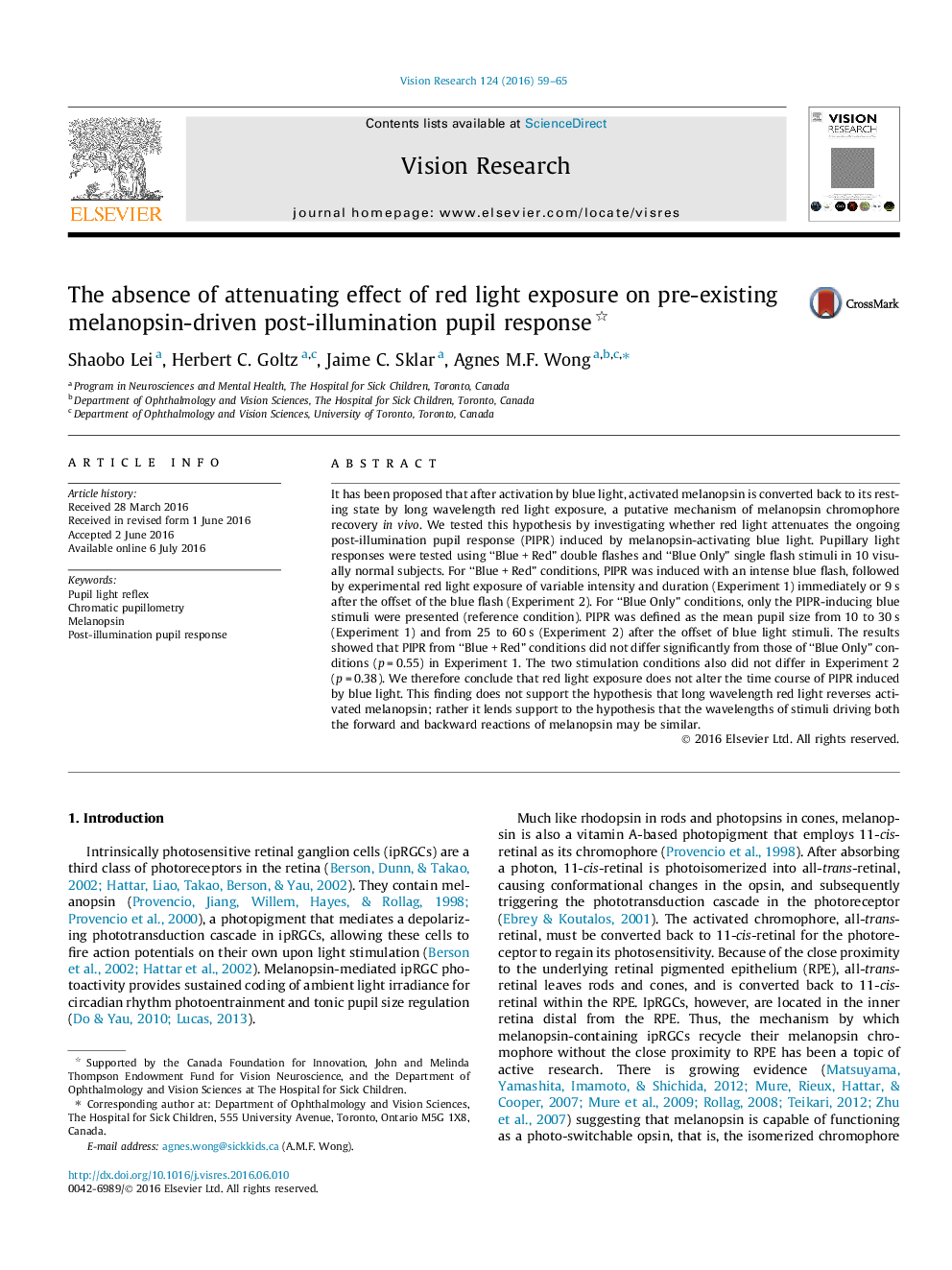| Article ID | Journal | Published Year | Pages | File Type |
|---|---|---|---|---|
| 6203010 | Vision Research | 2016 | 7 Pages |
â¢A novel blue-red double flash post illumination pupil response (PIPR) protocol was designed.â¢Red light exposure either attenuates or accentuates PIPR.â¢The regeneration of melanopsin may be insensitive to long wavelength light.
It has been proposed that after activation by blue light, activated melanopsin is converted back to its resting state by long wavelength red light exposure, a putative mechanism of melanopsin chromophore recovery in vivo. We tested this hypothesis by investigating whether red light attenuates the ongoing post-illumination pupil response (PIPR) induced by melanopsin-activating blue light. Pupillary light responses were tested using “Blue + Red” double flashes and “Blue Only” single flash stimuli in 10 visually normal subjects. For “Blue + Red” conditions, PIPR was induced with an intense blue flash, followed by experimental red light exposure of variable intensity and duration (Experiment 1) immediately or 9 s after the offset of the blue flash (Experiment 2). For “Blue Only” conditions, only the PIPR-inducing blue stimuli were presented (reference condition). PIPR was defined as the mean pupil size from 10 to 30 s (Experiment 1) and from 25 to 60 s (Experiment 2) after the offset of blue light stimuli. The results showed that PIPR from “Blue + Red” conditions did not differ significantly from those of “Blue Only” conditions (p = 0.55) in Experiment 1. The two stimulation conditions also did not differ in Experiment 2 (p = 0.38). We therefore conclude that red light exposure does not alter the time course of PIPR induced by blue light. This finding does not support the hypothesis that long wavelength red light reverses activated melanopsin; rather it lends support to the hypothesis that the wavelengths of stimuli driving both the forward and backward reactions of melanopsin may be similar.
